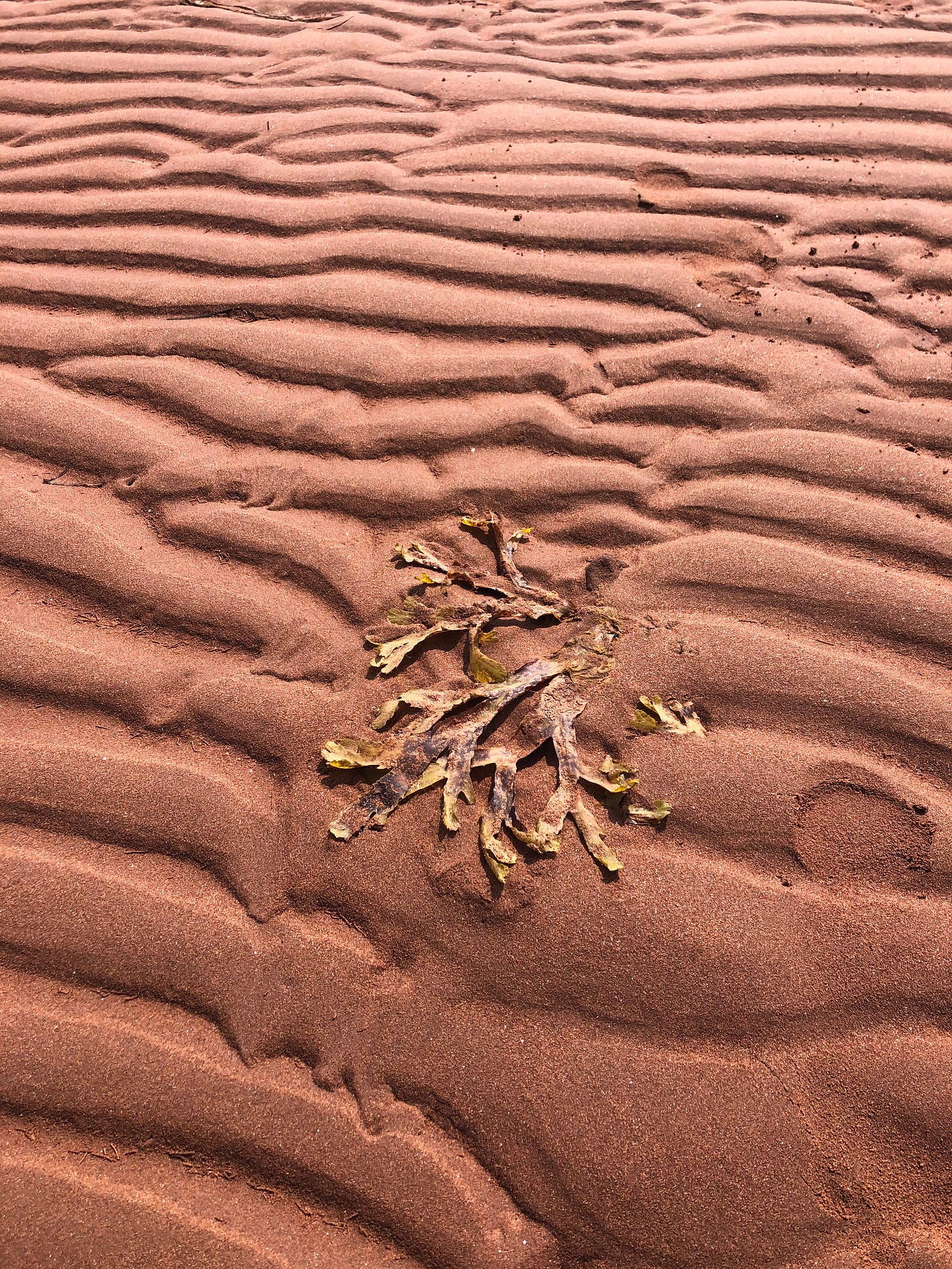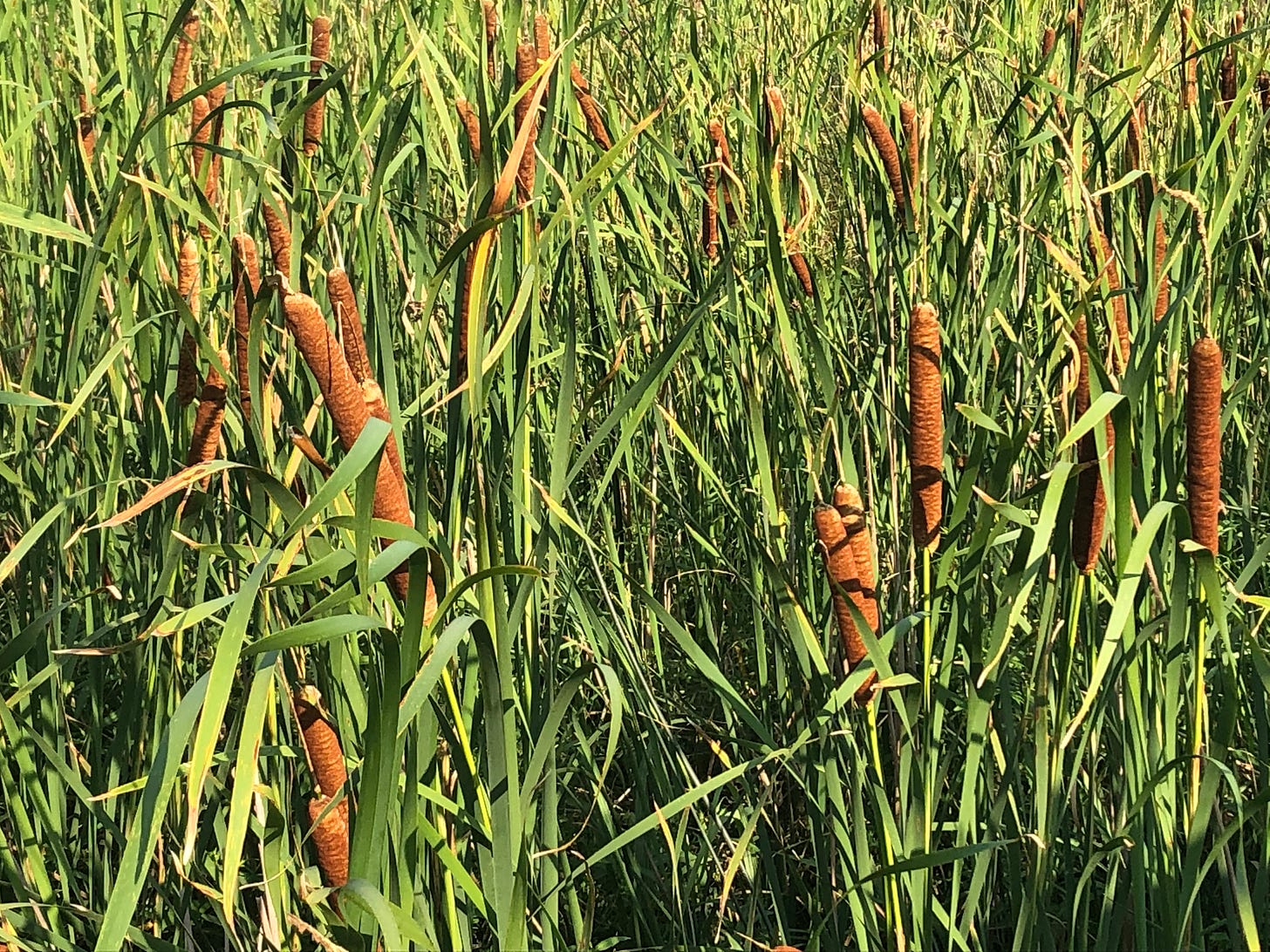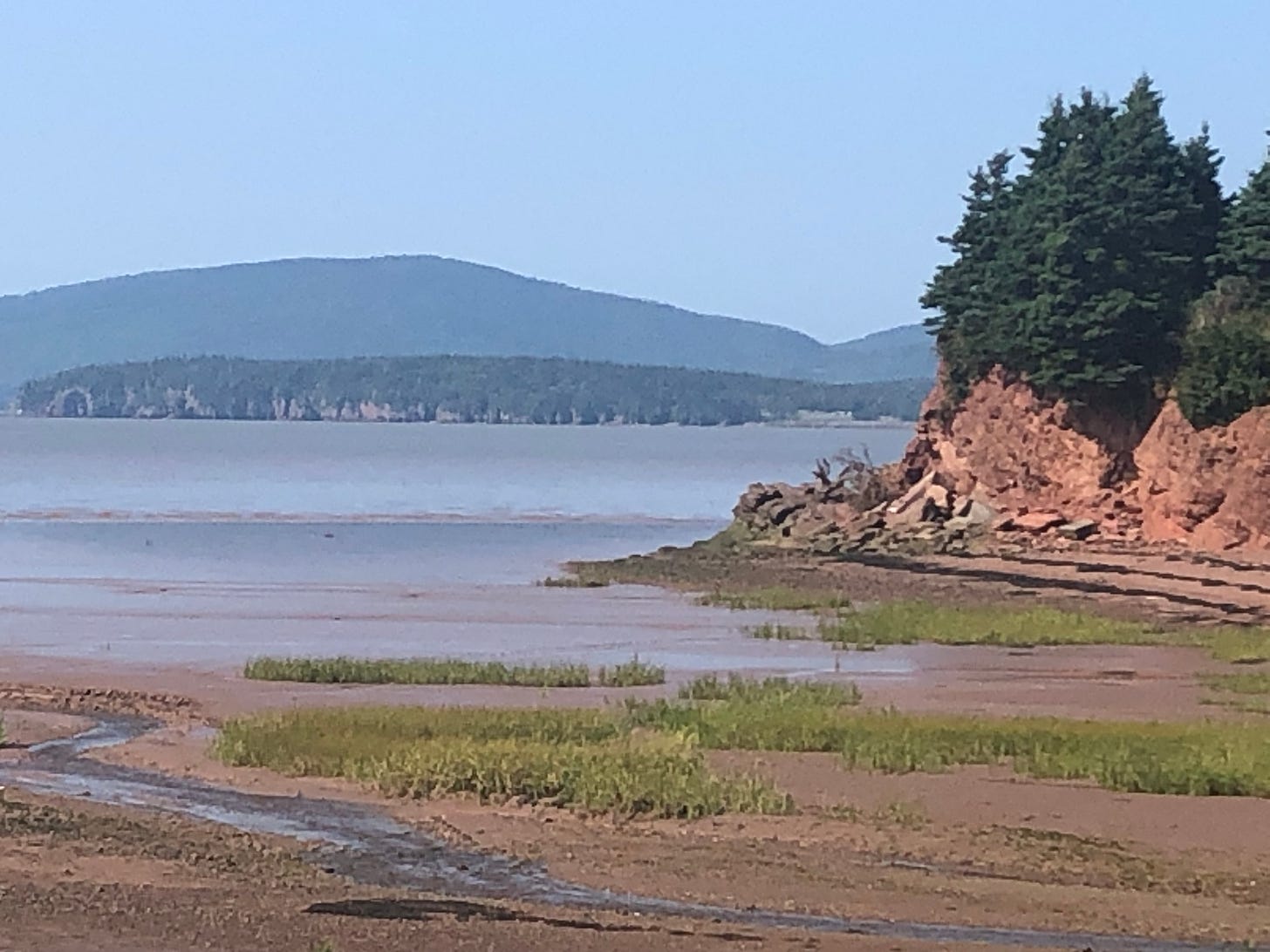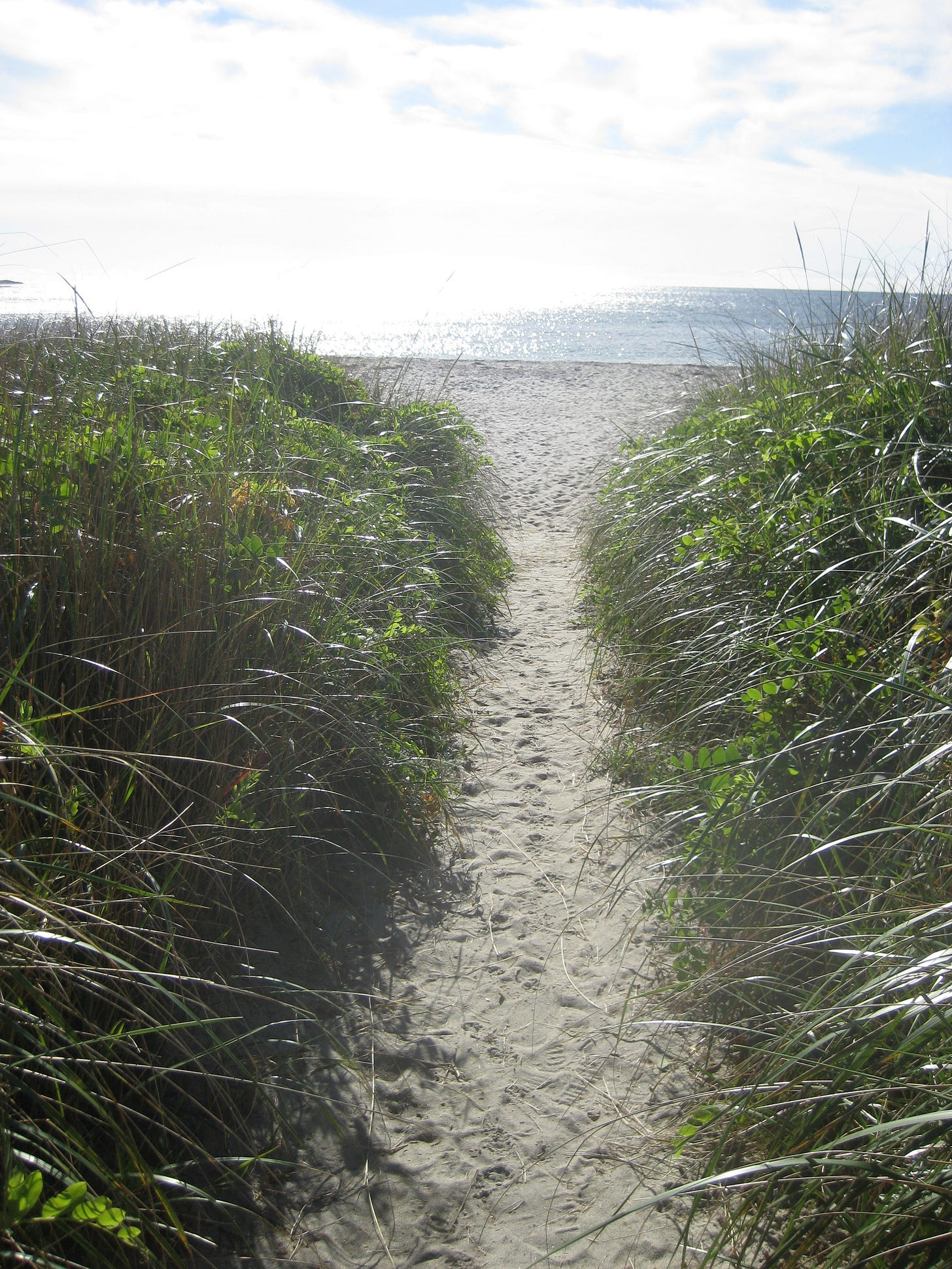Finding Connection in 'The Communal Hall of Sorrows'
And from the Archive: Making a Life, not Just a Living
Dear Readers,
Just wanted to let you know I’m back at my desk, working on a couple of stories, including the first piece in the Lichen Songs Series. Bear with me, I'm a little slow right now, having spent a good part of the summer either gazing aimlessly at the world around me, throwing pots, or trying to work through the grief of losing our beloved Luna.
I’ll be honest. It hit me very hard. But I’ve come to realize, that it’s ok to feel this way and that I/ we need to let grief move through us.
In Francis Weller’s book, The Wild Edge of Sorrow: Rituals of Renewal and the Sacred Work of Grief — something I picked up to help me cope through the darkest days of missing my sweet dog — grief is described as being “holy” and “sacred” and that to approach this sorrow, to be an “apprentice” to it, one needs to develop a practice:
Any form will do — writing, drawing, meditation, prayer, dance, or something else — as long as we continue to show up and maintain our effort. A practice offers balast, something to hold steady in difficult times. This deepens our capacity to hold the vulnerable emotions surrounding loss without being overwhelmed by them. Grief work is not passive: it implies an ongoing practice of deepening, attending and listening. It is an act of devotion, rooted in love and compassion.
Wave patterns in red sand, Argyle Shore Provincial Park, Prince Edward Island. Photo: Linda Pannozzo
Staying present with grief — no matter what its source — is the task at hand for many of us, and as Weller describes in his book, there are “five gates” through which grief will come, all leading to what he calls the “communal hall of sorrows.”
The first gate is the one we normally think of, the fact that one day we will lose everything we love.
But, as if that alone wasn’t enough for us to have to bear, there are several other sources of grief.
The second gate of grief is “what we perceive as defective about ourselves,” which we also experience as loss, writes Weller. “We chronically sense the presence of sorrow, but we are unable to truly grieve, because we feel in our body that this piece of who we are is unworthy of grief.”
Another word for this feeling is shame, and as Weller describes, it “ruptures our connection with life and with our soul.”
Cattails near Aboiteau beach, Cap-Pele, New Brunswick. Photo: Linda Pannozzo
The third gate of grief includes the “sorrows of the world.”
Anyone taking in even a tiny fraction of the news these days will be stricken by the never-ending loop of horror, of unfathomable suffering taking place around the world — what Weller describes as our understanding that “the greater part of the soul lies outside the body.” In other words, we are not really separate from the world around us, so when we experience or witness pain and destruction, it is the “soul of the world weeping through us.”
I have written about the weight of this kind of grief here, and my reaction to it has been to try to work toward “a world that values dialogue, recognizes the natural world is our life support system, and is committed to the truth.” A world not based in fear, but in love.
Weller’s fourth gate of grief includes all the things we expected but did not receive in our lives.
We are born expecting a rich and sensuous relationship with the earth and communal rituals of celebration, grief, and healing that keep us in connection with the sacred… This is our inheritance, our birthright, which has been lost and abandoned. The absence of these requirements haunts us, even if we can’t give them a name, and we feel their loss as an ache, a vague sadness that settles over us like a fog… On some level we are waiting for the village to appear so we can fully acknowledge our sorrows.
There was something else that village provided, that most of us are lacking today: a “deep sense” of our worth, our belonging, and our welcome, says Weller.
He also explains that this kind of loss also includes the idea of life’s purpose:
Deep in our bones lies an intuition that we arrive here carrying a bundle of gifts to offer to the community. Over time, these gifts are meant to be seen, developed, and called into the village at times of need. To feel valued for the gifts with which we are born affirms our worth and dignity. In a sense, it is a form of spiritual employment — simply being who we are confirms our place in the village.
Weller goes on to explain that we can only offer these gifts “by being ourselves fully.”
“Gifts are a consequence of authenticity; when we are being true to our natures, the gifts can emerge.”
Weller describes the questions, “What do you do for a living,” or “How do you earn a living,” as “obscene,” because the real question should be, “What is the gift you carry in your soul?”
“What have you brought with you into the heart of the village?”
Dorchester Cape, New Brunswick. Photo: Linda Pannozzo
Weller calls the fifth gate of grief “ancestral grief” and describes it as “the grief we carry in our bodies from sorrows experienced by our ancestors.” Borrowing from the late Stephen Levine, Weller calls it “sequestered pain,” and says that if it could make a sound it would be a “persistent hum in the background of our lives.”
Exposure to violence — whether it be through war or natural disaster or a violation to our physical bodies — is often very traumatic, and as Weller explains, trauma always carries grief, but not every grief carries trauma.
“Ultimately, all these gates lead to the same chamber, the communal hall of sorrows,” he says, “it makes no difference which door we open, or which threshold we cross. Every one of us has grief at each of these gates.”
And here’s the thing: When we open up to this grief, this sorrow, it “connects us with everyone, everywhere.”
Bayswater beach, Nova Scotia. Photo: Linda Pannozzo
Along the lines of Weller’s fourth and fifth gates of grief, I’m re-posting an article from the archive: Making a life not just a living. I wrote this nearly two years ago (hard to believe it has been that long), and it still rings very true for me. The cover photo is of my mother, who will be turning 94 this coming October. I’m grateful for her bottomless caldron of love and support, and all the sacrifices both she and my father made so that their children would have “a better life” than they had. This idea of the good life, and what it actually is, is something I’ve been grappling with for a very long time.
As always, I’m very grateful for all of you. Thank you for sticking with me, and supporting my work in whatever way you can. It means so much to me. If you can, please consider taking out a paid subscription, or consider sharing this post.
On Making a Life, Not Just a Living
“There is a vitality, a life force, an energy, a quickening that is translated through you into action, and because there is only one of you in all time, this expression is unique. And if you block it, it will never exist through any other medium and it will be lost. The world will not have it. It is not your business to determine how good it is nor how…







This is so beautiful Linda - you write things I feel but am not good at putting into words.
You help them keep me company, though. Thank you.